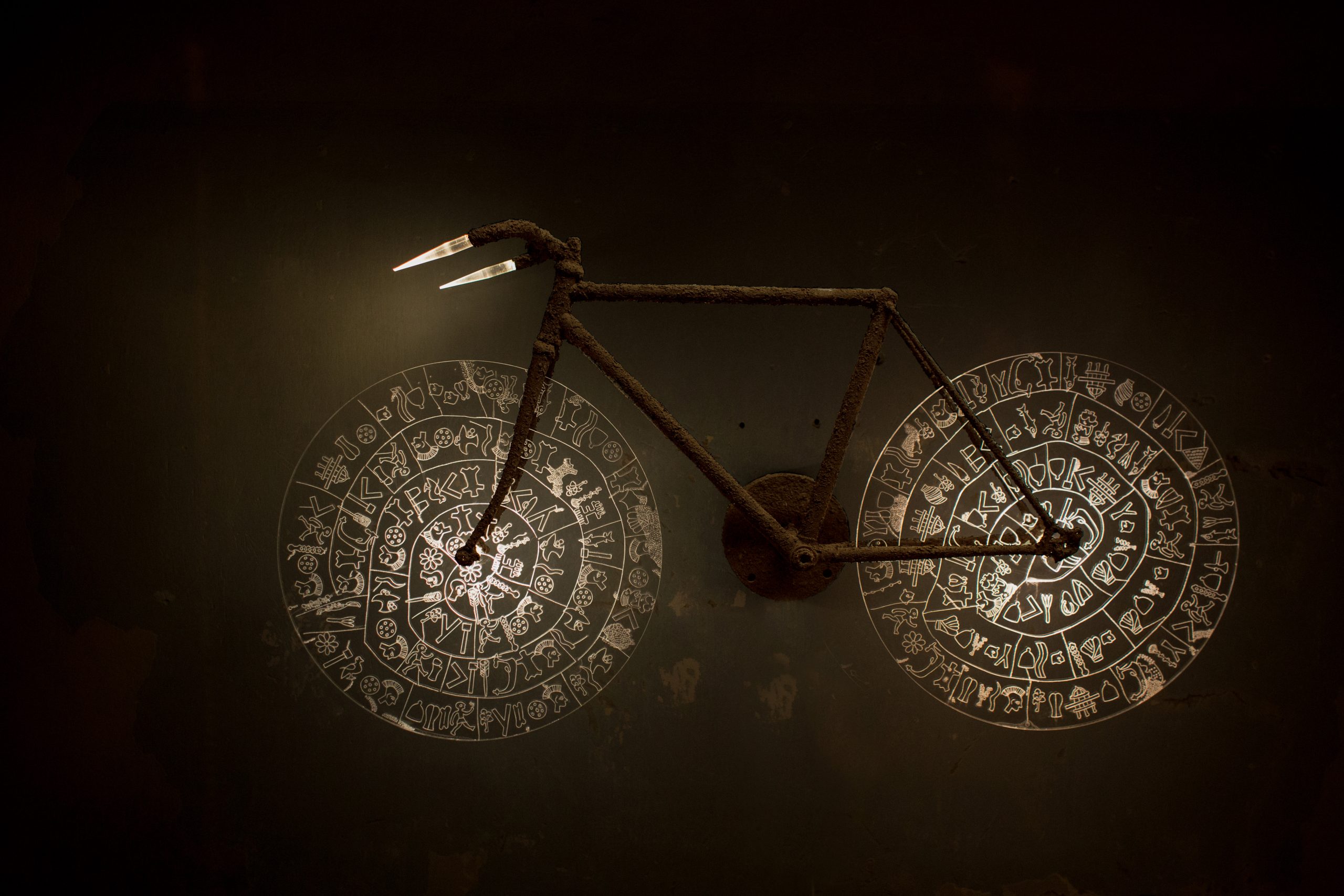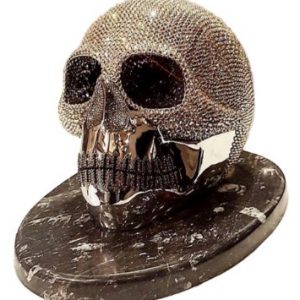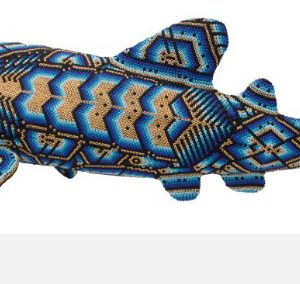Description
Artist/Maker: Vasilios Roumeliotis (b. 1977) / Roumelight
Object/Materials and Techniques: Cement Paint / Coated Metal Frame / Acrylic Glass
Date: Created in 2017
Dimensions: H. 110 cm. x W. 50 cm. x L. 175 cm.
Colours: Embossed Lava Grey
Art style: Light art / Luminism / Lighting sculpture
Current Location: Artist’s collection, Mykonos
Curator’s note: ‘The unsurpassed Minoan Spirit Captured in Iconic Style’
Titled after the name the archaeologists gave to the room in which they discovered the famous Phaistos Disc, the XL 101 lighting piece from the Roumelight lighting collection echoes the era evoked by the luminous rendition of the eminent artifact from the Minoan palace of Phaistos on the island of Crete, possibly dating back to the 2nd millennium BC (middle or late Minoan Bronze Age).
The impressive XL 101 luminaire belongs to the Minoan Light series, and calls attention to the colossal Prehistoric Hellenic Minoan civilization. More specifically, it draws inspiration from the ancient etymology of the name Phaistos, meaning brilliant and glorious, and the indisputable fact that ‘Phaistos Disc remains a hapax‘, according to archaeological researches.
Embodied in the wheels of a classic racing bike, the lighting artwork presents both sides of Phaistos Disc.
The handlebars of the bicycle end up in bright cones fashioned of acrylic glass, simulating the horns of the Minotaur, while the rotating force, the momentum and the spin of the bicycle are being related to the renowned strength and power of Minotaur, the mythical creature that dwelt at the maze-like construction built on the command of King Minos of Crete, known as Labyrinth. In that respect, X1 101 lighting piece features a series of intriguing elements that refer to the Prehistoric Minoan civilization, and are connected to Ancient Hellenic Mythology.
Additionally, Vasilios Roumeliotis aims to ‘put in the spotlight’ and ‘shine on’ the status of the mysterious and unresolved context of the Disc’s stamped symbols which, despite the ambitious attempts for a meaningful analysis by amateur and professional archaeologists, still stay hard-coded. As in, through the torque of the light wheels engraved in acrylic glass, exceptional emphasis is given on the flow of information and the indecipherable code behind the Disc’s signs, while the ash-like colour of the bike’s frame bringing in mind charred archaeological ruins.
Contemporary interpretations paired harmoniously with glorious past moments of a celebrated Ancient Hellenic kingdom, as delivered by the executive XL 101 luminary art piece from the Roumelight collection, ‘luminously’ encapsulate in any interior revealing the timeless fortress aura of the XL 101 room in the Minoan Palace.
Installation notes:
- The lighting bicycle can be mounted on any wall. Power supply is needed.
- The colour of the emitting light is warm white.
- The alignment of the second wheel has a slight shift of some lines and symbols, quite unobtrusive, but, if necessary, the rear wheel can be re-engraved.
- Technical support for assembling or hanging the lighting work is recommended.
- Instructions by the artist may be provided.
Notation:
- The Phaistos Disc (also spelled Phaistos Disk, Phaestos Disc), now on display at the Αrchaeological Μuseum of Heraklion, on the island of Crete, was discovered in 1908 by the Italian archaeologist Luigi Pernier in the basements of the northern group of the Minoan palace – site of Phaistos that appeared to have been an administrative centre of Minoan Crete.
This artifact is a fired soft clay disk, possibly dated between 1950 BC and 1400 BC, middle or late Minoan Bronze Age (second millennium B.C.). It is covered on both sides with a unique, sophisticated hieroglyphic script of stamped symbols in a clockwise sequence spiralling toward the centre of the disk. It features 241 tokens, comprising 45 distinct signs, which were apparently made by pressing hieroglyphic ‘seals’ into it. The disk is about 15 cm (5.9 in) in diameter.
The Phaistos Disc has captured the imagination of amateur and professional archaeologists, and many attempts have been made to decipher the code behind the disc’s signs but its purpose and original place of manufacture remain disputed.
- Phaistos (Greek: Φαιστός, pronounced [feˈstos]; Ancient Greek: Φαιστός, pronounced [pʰai̯stós], Minoan: PA-I-TO), also transliterated as Phaestos, Festos and Latin Phaestus, is a Bronze Age archaeological site at modern city of Phaistos, a municipality in south central Crete.
The name Phaistos is pre-Greek and survives from ancient Greek references to a city in Crete of that name at or near the current ruins. After 1955 the place name, pa-i-to > Attic type Phaistos, interpreted as Phaistos (written in Mycenaean Greek), began to turn up in the Linear B tablets at Knossos. Its etymology comes from the fa (F)istós (web) = brilliant, glorious.
However, no Linear B records has been found at Phaistos which is very strange and surprising.
The historian Diodorus Siculus indicates that Phaistos, together with Knossos and Kydonia, are the three towns that were founded by King Minos on Crete. The kingdom centred at Knossos from where the state was ruled, under a monarchy symbolized by King Minos.
References to Phaistos in ancient Greek literature are quite frequent. Phaistos is first referenced by Homer ‘as well populated’, and the Homeric epics indicate its participation in the Trojan War.
- The Minotaur, is a mythical creature of Hellenic mythology. The Minotaur is portrayed in Classical times with the head and tail of a bulland the body of a man, a ‘being part man and part bull’, as described by the Roman poet Ovid. He dwelt at the centre of the Labyrinth, which was an elaborate maze-like construction designed by the architect Daedalus and his son Icarus, on the command of King Minos of Crete. The Minotaur was eventually killed by the Athenian hero Theseus.
Bibliographic References:
- J. Evans, Scripta Minoa, the written documents of Minoan Crete, with special reference to the archives of Knossos, Classic Books, 1909, ISBN 0-7426-4005-1.
- Thomas Balistier , The Phaistos Disc – an account of its unsolved mystery, Verlag Thomas Balistier, 2000.
- Louis Godart, The Phaistos Disc – the enigma of an Aegean script, ITANOS Publications, 1995.
- Alice Kober, The Minoan Scripts: Facts and Theory, American Journal of Archaeology, 1948, Vol. 52, No. 1, pp. 82–103.
- Hermann Kem, Through the Labyrinth, Munich, London, New York: Prestel, 2000, p. 34, ISBN 3-7913-2144-7.
- Phillip W, Simpson, Μινώταυρος, Ελληνικά Γράμματα, 2017, ISBN 13-9789-6019-0641-6.









